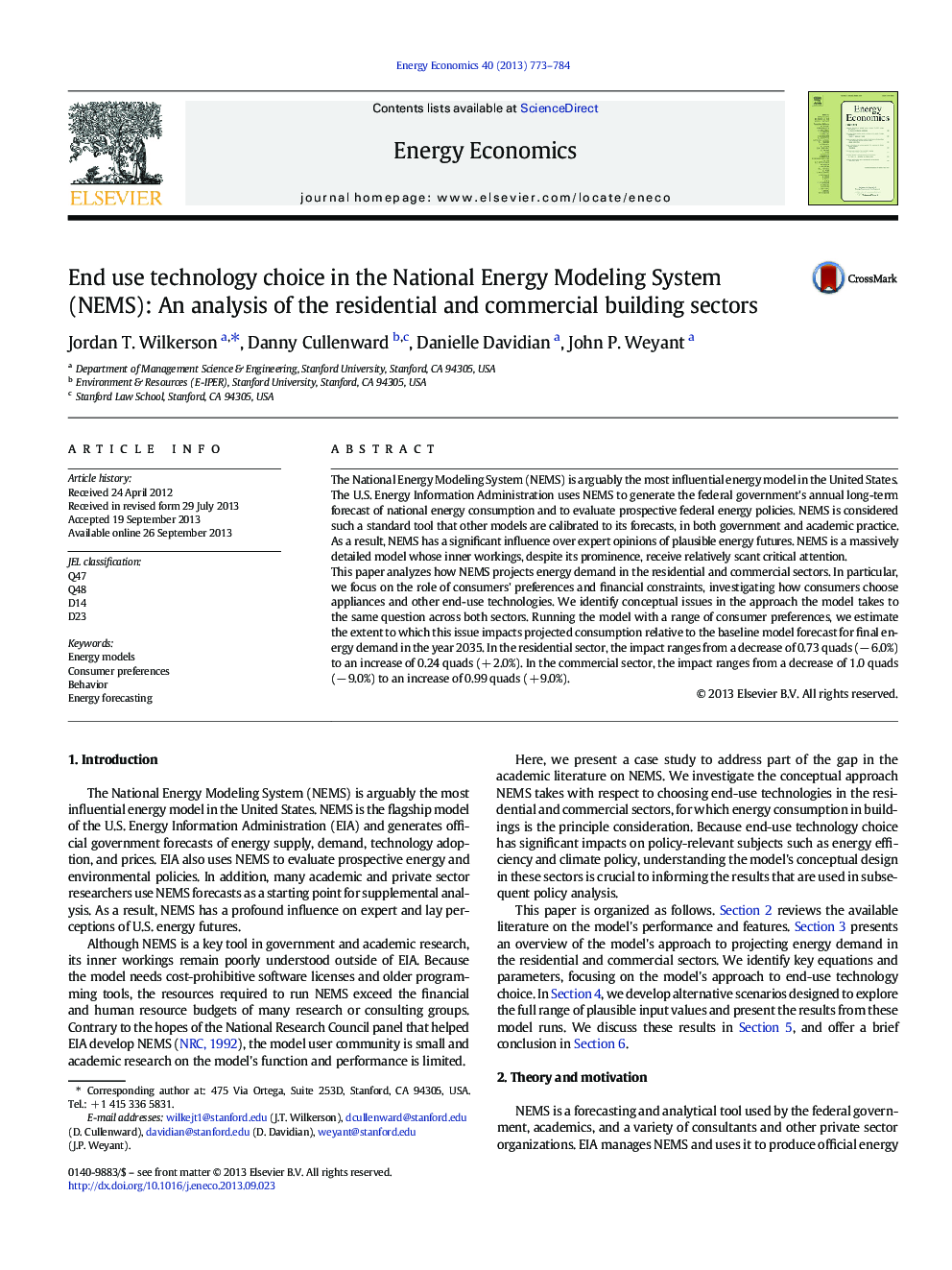| کد مقاله | کد نشریه | سال انتشار | مقاله انگلیسی | نسخه تمام متن |
|---|---|---|---|---|
| 5064799 | 1476723 | 2013 | 12 صفحه PDF | دانلود رایگان |

- This paper examines the impact of consumer preferences on final energy in the Commercial and Residential sectors of the National Energy Modeling System (NEMS).
- We describe the conceptual and empirical basis for modeling consumer technology choice in NEMS.
- We offer a range of alternative parameters to show the energy demand sensitivity to technology choice.
- We show there are significant potential savings available in both building sectors.
- Because the model uses its own definitions for certain common terms, model users and social scientists need to translate new information about consumer behavior and financing options into usable model parameters.
The National Energy Modeling System (NEMS) is arguably the most influential energy model in the United States. The U.S. Energy Information Administration uses NEMS to generate the federal government's annual long-term forecast of national energy consumption and to evaluate prospective federal energy policies. NEMS is considered such a standard tool that other models are calibrated to its forecasts, in both government and academic practice. As a result, NEMS has a significant influence over expert opinions of plausible energy futures. NEMS is a massively detailed model whose inner workings, despite its prominence, receive relatively scant critical attention.This paper analyzes how NEMS projects energy demand in the residential and commercial sectors. In particular, we focus on the role of consumers' preferences and financial constraints, investigating how consumers choose appliances and other end-use technologies. We identify conceptual issues in the approach the model takes to the same question across both sectors. Running the model with a range of consumer preferences, we estimate the extent to which this issue impacts projected consumption relative to the baseline model forecast for final energy demand in the year 2035. In the residential sector, the impact ranges from a decrease of 0.73 quads (â 6.0%) to an increase of 0.24 quads (+ 2.0%). In the commercial sector, the impact ranges from a decrease of 1.0 quads (â 9.0%) to an increase of 0.99 quads (+ 9.0%).
Journal: Energy Economics - Volume 40, November 2013, Pages 773-784